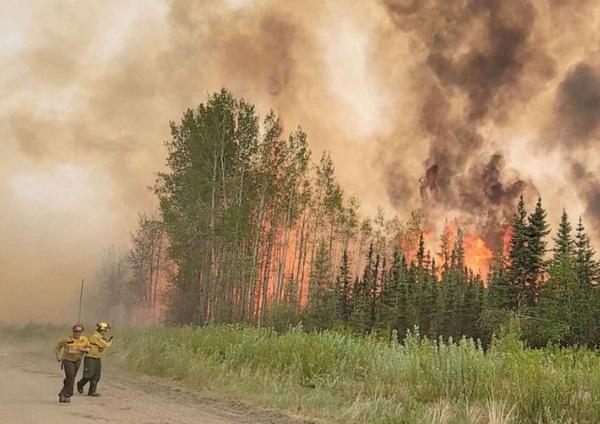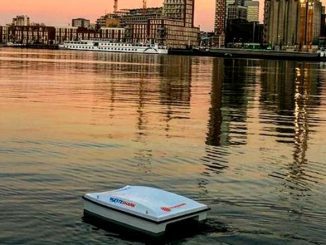
STOCKHOLM, Sweden, May 31, 2023 (ENS) – Humans are taking “colossal risks with the future of civilization and everything that lives on Earth,” a new Earth Commission study published today in the journal “Nature” concludes. Forty researchers from across the globe delivered the first quantification of “safe and just Earth system boundaries” on both global and local levels for biophysical processes and systems that regulate the state of the planet.
Earth system boundaries, as identified by the Earth Commission, are scientifically quantified safe and just limits for climate, freshwater, biodiversity, nutrient cycles and aerosol pollutants at global and subglobal scales.
They delineate a long-term corridor for humanity on a global scale – a safe and just zone for people and planet. By operating within these limits, the Earth Commission says we can maintain a stable and resilient planet and ensure access for everyone to the resources necessary for a dignified life.
The goal of this work is to translate the scientific guardrails defined by the Earth Commission into tangible science-based targets for nature, specifically tailored to cities and companies by the Science Based Targets Network. Last week, the Network launched its first science-based targets for nature, aiming to set the global standard for ambitious and measurable corporate action.
Earth System Boundaries, ESBs, are hard limits. Even temporary overshooting of some of the boundaries can permanently damage the planet’s critical systems, causing irreparable harm to life, the Commission warns in its report.
Safety and justice for humanity on Earth are assessed and quantified for the same control variables regulating life support and Earth stability in the new study titled, “Safe and just Earth system boundaries,” online here.
Justice, assessed based on avoiding “significant” harm to people across the world, tightens the Earth system boundaries, providing less available space for humans on Earth. This is challenging, as the Earth Commission study concludes that many of the safe boundaries have been crossed already.

“Seven of eight globally quantified safe and just Earth system boundaries and at least two regional safe and just ESBs in over half of global land area are already exceeded,” the Earth Commission study states.
For instance, the climate tipping point has not yet been breached, according to the study. The calculations show that the “Safe” guideline of no more than 1.5°C of warming above pre-industrial levels to avoid high likelihood of multiple climate tipping points has not yet been breached.
Yet the “Just” guideline of 1°C to avoid high exposure to significant harm from climate change has been breached and now stands at 1.2°C.
“Damage from climate change is already happening to millions of people all over the world,” the Earth Commission states in its report. “All of us, but especially those in positions of power or decision making roles in finance, business and policy making, can and must evolve any current climate commitments and actions in line with the safe and just boundaries. We can and must integrate justice, considering innovation and redistribution in order to meet basic needs for everyone.”
“We can and must commit to working holistically across climate, biosphere, freshwater, nutrients (fertilisers) and aerosols,” the Earth Commission urges.
“Companies can start taking action now. A world economy that operates within safe and just Earth System Boundaries is one of the most important societal and business opportunities of our lifetime. Without immediate action, our future will not be safe. Nor will it be just,” the Earth Commission states. “We can and must take action now.”
The study’s authors emphasized that theirs is not a terminal diagnosis. They say the planet can recover if humanity changes its behavior, including its use of coal, oil and natural gas and the way it treats the land and water, the scientists said.
Getting to Know the Earth Commission
The Earth Commission is an international team of natural and social scientists and five working groups of additional experts coordinated by the Earth Commission Secretariat hosted in Stockholm by Future Earth Sweden.
The Earth Commission was first announced in Davos, Switzerland at the World Economic Forum on January 23, 2019. A panel including Future Earth and partners told a live audience of their intent to launch an Earth Commission.
Now a reality, the Earth Commission is the scientific cornerstone of the Global Commons Alliance, a coalition of scientists, philanthropists, businesses and innovators safeguarding what is “common and precious to us all: the global commons.”
“If done right, we can turn the tragedy of the global commons into an opportunity. Safeguarding the global commons is the wisest investment that can be made,” Naoko Ishii, director, Center for #GlobalCommons, University of Tokyo and former head of the Global Environment Facility, said.
The vision of Future Earth is that of “a sustainable and equitable world for all, where societal decisions are informed by openly-accessible and shared knowledge.” Future Earth’s mission is to advance research in support of transformations to global sustainability.
The day-to-day operations of Future Earth are carried out by the Secretariat, which is based in eight Global Hubs located in Montreal, Canada; Beijing, China; Paris, France; Tokyo, Japan; Bangalore, India; Stockholm, Sweden; Taipei, Taiwan; as well as Boulder and Fort Collins, Colorado, and Fairfax, Virginia in the United States.
The Earth Commission is led by three distinguished professors who all serve as co-chairs:
- – Johan Rockström of Sweden, director of the Potsdam Institute for Climate Impact Research and professor in Earth System Science at the University of Potsdam, and named one of “Time” magazine’s 100 Most Influential People of 2023.
- – Joyeeta Gupta, professor of climate change policy and law at the VU University Amsterdam and of water and environmental law and policy at the UNESCO-IHE Institute for Water Education in Delft;
- – Qin Dahe, scientist in glaciology, climatology and geography, an academician of the Chinese Academy of Sciences, and a member of the Third World Academy of Sciences. Currently, he is co-chair of Working Group I of the Intergovernmental Panel on Climate Change, president of the Chinese Meteorological Society, director of the Division of Earth Sciences of Chinese Academy of Sciences, and director of the State Key Laboratory for Cryospheric Science.
Earth Commissioners were selected by the Future Earth Advisory Committee following an open call for nominations with consideration for balancing gender, geographical region and expertise to the extent possible, the Commission states.

“We are in the Anthropocene, putting the stability and resilience of the entire planet at risk. This is why, for the first time, we present quantifiable numbers and a solid scientific foundation to assess the state of our planetary health not only in terms of Earth System stability and resilience but also in terms of human wellbeing and equity / justice,” said study co-author Professor Rockström.
Rockström pioneered the idea of “planetary boundaries,” limits within which people must operate in order to keep humanity safe, a concept his fellow co-authors understand thoroughly.
“Justice is a necessity for humanity to live within planetary limits. This is a conclusion seen across the scientific community in multiple heavyweight environmental assessments. It is not a political choice. Overwhelming evidence shows that a just and equitable approach is essential to planetary stability. We cannot have a biophysically safe planet without justice. This includes setting just targets to prevent significant harm and guarantee access to resources to people and for as well as just transformations to achieve those targets,” said co-author Professor Gupta.
If planet Earth just got an annual check-up, like a person’s physical, “our doctor would say that the Earth is really quite sick right now and it is sick in terms of many different areas or systems and this sickness is also affecting the people living on Earth,” said Gupta at a news conference.
Health Indicators for People and Planet

The Earth Commission has quantified safe and just boundaries for climate, biodiversity, freshwater and different kinds of pollution to air, soil and water, but warns that most of these boundaries have been breached already.
Human activities are altering water flows, excessive amounts of nutrients are released into waterways from fertilizer use, and limited natural areas are left. This poses existential threats for a stable planet, to ecosystems and their vital contributions to people.
The world has already passed the safe and just climate boundary, which is set at 1°C above pre industrial temperature levels, as tens of millions of people are already harmed by the current level of climate change, the report shows.
“Our results are quite concerning. Within the five analyzed domains, several boundaries, on a global and local scale, are already transgressed. This means that unless a timely transformation occurs, it is most likely that irreversible tipping points and widespread impacts on human well-being will be unavoidable. Avoiding that scenario is crucial if we want to secure a safe and just future for current and future generations,” Rockström warned.
Global Targets Beyond Climate
Global target setting has focused on climate change and limiting global warming well below 2°C and aiming at 1.5°C according to the Paris Agreement. Science also clearly shows there is a need to manage all the other biophysical systems and processes on Earth that determine the livability on the planet.
“The Earth system is an interconnected set of biophysical processes that operate across regions and scales. Interference in one part of the world can have enormous impacts in other regions. Using Earth Systems Boundaries as an entry point for holistic and transformative action will support impactful and just progression towards a safe and just world,” said Earth Commission Executive Director Wendy Broadgate, who also serves as Future Earth Global Hub Director, Sweden.

The new study builds on authoritative scientific evidence defining the biophysical conditions to maintain a stable planet to underpin life on Earth as well as assessing how significant harm can be avoided to humans and other species.
Past scientific attempts to define environmental boundaries, such as the Planetary Boundary framework, have looked at the global conditions needed to maintain a stable planet and safeguard life on Earth.
“The new research provides safe and just earth system boundaries for five critical domains that play a key role in life support and Earth stability. It also explores what’s needed to minimise significant harm to humans as a result of changes in the Earth system and sets boundaries at scales relevant for assessment and management of the conditions of biophysical systems such as the biosphere and freshwater.” explained lead author and research scientist Steven Lade.
Dr. Lade is an ARC Future Fellow at the Australian National University, a researcher at the Stockholm Resilience Centre at Stockholm University, and Science Lead at the Earth Commission Secretariat.
Safe boundaries ensure stable and resilient conditions on Earth. A stable and resilient Earth is dominated by balancing feedbacks that cope with buffer and dampen disturbances. Cutting edge science on climate tipping points feature as one major line of evidence to set safe boundaries.
Just boundaries minimize human exposure to significant harm. The Commission defines significant harm as: widespread severe existential or irreversible negative impacts on countries, communities and individuals from Earth system change, such as loss of lives, livelihoods or incomes, displacement, loss of food, water or nutritional security, chronic disease, injury or malnutrition.
“Our safe and just boundaries will guide target setting, but must also be realized through just transformation processes that ensure minimum access to resources for people,” Gupta said.
The Safe and Just boundaries take the stricter of the two quantified levels to identify the Safe and Just Earth System Boundary.
Targets for the Real World
The Earth Systems Boundaries will underpin the setting of new science-based targets for businesses, cities and governments to address the crises of: increasing human exposure to the climate emergency, biodiversity decline, water shortages, ecosystem damage from fertilizer overuse in some parts of the world coupled with lack of access elsewhere, and health damage from air pollution.
In a time of increasing scrutiny and expectations, the resilience and success of businesses, cities and governments will depend on their ability to accurately measure and improve their impact on people and planet – and target opportunities within the finite limits of the planet.
“A safe and just transformation to a manageable planet, requires urgent, collective action by multiple actors, especially in government and business to act within Earth system boundaries to keep our life support system of the planet intact. Stewardship of the global commons has never been more urgent or important,” Broadgate said.
“With this global scientific assessment, we provide all stakeholders with scientific boundaries that can enable a prosperous and equitable world development on a stable planet, a better future for people and planet. This new science functions as input to the development of science-based targets. These can be adopted by cities, businesses and countries to address the systemic global crises of climate change, biodiversity loss, nutrient overloading, overuse of water, and air pollution,” Rockström concludes.
Future Earth is supported by four Custodian Organizations: the United Nations Educational, Cultural and Scientific Organization, UNESCO; the UN Environment Programme, UNEP; the International Science Council; and the Belmont Forum, a partnership of major and emerging funders of global environmental change research, international science councils, and regional consortia committed to the advancement of transdisciplinary science.
Featured image: Sunrise over Punta del Este, a seaside city and peninsula on Uruguay’s Atlantic Coast. May 1, 2022 (Photo by Jimmy Baikovicius)
© 2023, Environment News Service. All rights reserved. Content may be quoted only with proper attribution and a direct link to the original article. Full reproduction is prohibited.



